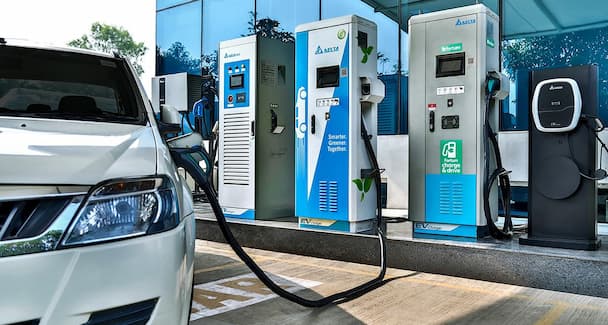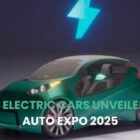How To Avoid EV Charger High Temperatures
EVs are fast gaining popularity in the country. It has led to an increase in demand for efficient and highly reliable public and private charging stations. However, overheating is a common concern that EV owners face. Chargers may overheat to an extent that it leads to safety hazards and reduced efficiency. It also causes the equipment to experience faster wear and tear and irreparable damage.
Charger high temperatures
Perhaps you notice smoke rising from the primary charger. It can be a nightmare for any EV owner, especially if it occurs during a charging period. Such risks in indoor chargers cause safety issues for life and property. Fortunately, electric vehicle charger-related fires are rare. However, if they occur, they can damage infrastructure. They also cause severe disruption to your fleet operation. Hence overheating should be avoided at all costs.
Reasons for EV chargers to experience high temperatures
- Poor ventilation: You might have placed the charging station in a poorly ventilated or enclosed area. Keeping it in this condition for longer hours traps heat. This, in turn, overheats the charger. Proper airflow ensures the safe operating temperature of the equipment.
- High-power charging: Heat generation is excess in high-power DC fast chargers. This is because the electrical component supplies lots of current in a short time. Excess heat requires dissipating. However, repeated fast charging may cause overheating.
- Overloaded circuits: Powering too many devices in the same circuit causes overloading and overheating of the charger. For instance, you may have plugged in the 11 or 7kW charger with other high-powered appliances. If it is on the same circuit, it could exceed its capacity, resulting in excessive heat generation.
- Environmental conditions: The charger can get overheated due to extreme weather conditions including high ambient temperatures. Outdoor wall box chargers having poor protection and being exposed to direct sunlight can cause the charger to overheat. Consider these factors when installing charging points.
- Inferior or faulty components: Uncertified or low-quality chargers may cause high operating temperatures. Moreover, chargers that lack adequate safe features or are constructed with substandard materials may find it difficult to dissipate heat. Hence, select top-quality components that are safe, and offer mental peace, and satisfaction from usage.
- Poor installation: Improper or substandard installation or wrong wiring might increase electrical resistance. This, in turn, generates heat that poses a danger over time. Proper installation is crucial for smooth functioning and keeping the charger at optimum temperature.
- Cooling issues: EV chargers are similar to desktop computers. They generate heat on usage. Hence, fans are installed on computers and EV chargers to cool them during operation. Otherwise, excess heat generated will cause irreparable damage. Often, leaves or debris might block the fans, resulting in overheating the component.
- Lack of maintenance: Irregular maintenance might result in severe overheating and component damage. Visual inspection and physical cleaning prevent dirt and dust accumulation. It also helps identify broken or loose cables, wear and tear, and cracks. Functional tests are equally important for elements.
- Firmware or software-related problems: The charging firmware or software might develop bugs or glitches over time. It causes its internal mechanism to experience excess pressure. A firmware glitch causes non-stop cycles, resulting in the charger getting overheated. DC fast charging station in Karnal is safe to charge your EV.
Tips to prevent EV charger high temperature
- Install the charging point in a ventilated area of your home or establishment. The place should allow adequate airflow. Do not select enclosed spaces as they restrict ventilation. For outdoor charger installation, use weatherproof enclosures. It ensures proper cooling. Besides this, the charger should have waterproof and anti-fog features. It should not allow entry of dust, heat, and other impurities that otherwise might generate heat and damage the circuit.
- A dedicated circuit protects your charger from overloading. It is crucial for high-power chargers. Such circuits reduce overheating and ensure the charger functions to its optimum. Invest in a high-quality, certified charger that is made from reliable materials and is safe. It should have undergone rigorous testing, meet international standards, and ensure efficient operation.
- Your work does not end after charger installation. It requires frequent monitoring and proper maintenance for effective functioning. Inspect it for signs of damage or wear and tear. Clean it regularly and ensure secure connections. It helps prevent overheating. Select a charger equipped with a built-in temperature measuring feature. In case of excess temperature, it shuts down automatically, thus preventing device damage.
Frequency of taking preventative measures
It is only in rare cases that overheated chargers cause smoke or fire. The situation is similar to a vehicle’s internal combustion engine, like a truck or bus. Hence, the charging site doesn’t suffer from overheated component damage. However, it is necessary to conduct regular checks and take adequate protective measures to reduce risks while charging your EV. Have emergency tools handy to detect and prevent overheated chargers.
How can you detect overheated EV chargers?
The top battery manufacturers have developed diverse measures. The objective is to prevent the occurrence of such worst-case scenarios. However, no system provides a hundred percent guarantee to avoid overheating. You may invest in tools that are field-tested and proven successful in detecting these problems. The modern AI-powered software manages your charging needs. It identifies overheating issues automatically. Besides this, it triggers several automated actions to prevent another session.
Why is charging the EV during high temperatures not possible?
Lithium-ion-based batteries are heat sensitive. As it generates excess heat, it fails to hold onto the charge. Over time, this extra heat damages the device. Charting the battery in such conditions might take longer than expected. With an increase in device temperature, resistance also increases. More energy is consumed for charging. Besides this high temperature exposure reduces battery capacity and health.
Select the best software to detect overheating issues!
The best software will exhibit the above features and work to the optimum with most chargers. However, certain brands upgrade their firmware to derive this feature. With charging locations increasing at a rapid pace throughout the country, this functionality will be in demand. You can expect charger hardware manufacturers to offer more options in the future.




